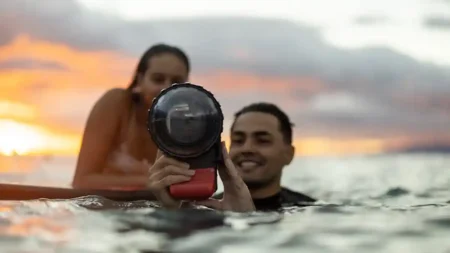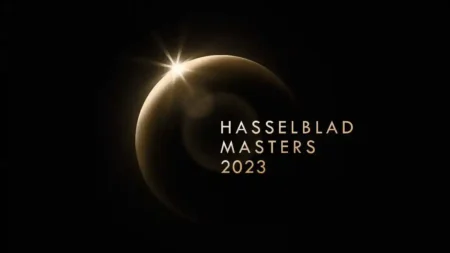Inside the Canon EOS R100 is a 24.1MP APS-C format sensor that supports Dual Pixel CMOS AF (autofocus) to deliver phase-detection focusing when shooting stills or video. That’s the same sensor that’s in the Canon M50 Mark II, but according to Canon, it’s been optimised for the R100.
The sensor is paired with Canon’s Digic 8 processing engine which was introduced with the Canon M50 in February 2018. In the R100, this sensor and processor combination enables the native sensitivity setting to go up to ISO 12,800.
While shutter priority, aperture priority and manual exposure modes are present, the Canon R100 also has program, scene, Auto+, Creative Filter and Creative Assist modes for inexperienced photographers who may need some help with getting the exposure or the appearance of their images as they’d like them.
Canon’s Hybrid Auto mode is also available to allow users to shoot short (2-4 second) clips of video with every still. These clips can then be combined to create a movie of the day.
When it’s set to continuous autofocusing, the Canon R100 has a maximum continuous shooting rate of 3.5 frames per second. If the focusing system is switched to Single AF, the rate jumps to 6.5 fps.
As you’d expect, the Canon R100 is capable of shooting 4K movies at up to 25p, however, there’s a 1.55x (64%) crop applied. That’s on top of the 1.6x crop that results from the sub-full-frame sensor. It means that the RF 18-45mm F4.5-6.3 IS STM, which is the widest Canon RF-S lens currently available, effectively becomes a 44.6-111.6mm lens.
Dropping the video resolution to Full HD increases the maximum frame rate to 120p, that’s useful for creating a slow-motion video of action.
Thanks to its Wi-Fi and Bluetooth connectivity, the Canon R100 can connect to smart devices running the Canon Camera Connect App. This app enables remote control over the camera as well as easy image transfer and sharing. It can also be used to update the camera’s firmware.
The camera also integrates with the image.canon cloud platform for storage, backup and sharing.
It’s interesting to note that in addition to a small pop-up flash, the R100 has a hot shoe to connect an external flash. However, this is the older 5-pin-type hotshoe rather than the newer Multi-function shoe.



